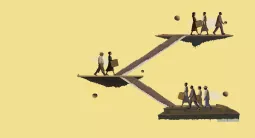The horse-drawn carriages
When you come to a new place, where the language is unfamiliar and your understanding of the basic issues is quite limited, it is very easy to look at the new world which surrounds you with a typical tourist filter.
Looking at things as the tourist would do: with some initial curiosity, but without a real desire to comprehend it, to make sense of it – shouldn’t be considered as a wrong thing. Unless you’re a journalist: if so, not understanding something quickly starts to make you crazy. It becomes itchy and painful.
That’s what I was experiencing for the last four days: since I don’t read or speak in Spanish and my researching is limited, I decided to just look around and make a list of things which are obvious, almost invincible, but worth exploring – mostly because I’m not interested in staying safe and feeling too comfortable in a tourist bubble.
On my second day in Cartagena, after I came back to the hotel in the evening, I started looking through the photographs which I took. One thing stroke me immediately: horse-drown carriages, which are very photogenic, appeared in most of my pictures. I didn’t took the ride when I was visiting the historical centre – mostly because I just prefer walking – but the questions started popping up in my mind: how many of these carriages are here, in Cartagena? Who are the drivers? How much money do they earn and how much do they have to spend every month to maintain the horse and the carriage? Are these people poor? What do local people and the tourists think about it? How important is this tradition to Cartagena people? Or is it just an empty ritual, an attraction that means just the opportunity to make money? And finally – is it controversial? How are the horses being treated? In Poland, where carriages drivers operate in the mountain areas, the death of one horse in 2014 (it collapsed during the ride) initiated a great discussion in Polish media. Everyone who had a tv knew the name of this horse: Yukon. Drivers were being criticized for not treating their animals well. What’s the situation here, in Colombia?
The horse-drawn carriages are the icon of Cartagena. First, it was a way of transport strongly related to the people of power, e.g. the members of the inquisition; it also became popular among the wealthy residents of the city. As time went by, carriages became more and more democratic: first as middle-class people’s mode of transportation and then, finally, since 1945, as a tourist attraction. Which is lately considered to be a controversial one.
As Columbiareports.com says, this traditional Spanish-style activity has been strongly criticized because of the deaths of six horses in 2014. In Cartagena on 21st of April, an animal collapsed while pulling a carriage with four tourists and after that the driver was attacked by angry witnesses.
Animal rights activist started the campaign to shut down this popular tourist attraction. But what about the drivers? The author of popular blog about Colombia (Mike’s Bogota Blog) says that banning these carriages will have devastating consequences for the horse owners and their families; as he points out, drivers are "overwhelmingly poor and uneducated," and are unlikely to make an easy transition to motorized vehicles.
Before 2014 the drivers didn’t have to worry about it. The last decade was a golden era for them. As Cartagena blossomed as a tourist destination, more and more people came to this astonishing city and they wanted to experience an old-fashioned ride among the colonial buildings. On the third day of my stay I decided to look for the traces of this golden era with a help of my guide, Joaquim, a photographer who lives in Cartagena.
Late in the afternoon, we entered the gate of historical centre. Joaquim explained that until 2014 there were 60 carriages in the whole city and they gather in different spots: the closer the spot was to the historic centre, the more the driver could earn. The drivers were loud and competitive; they started appear on the streets of the old part of the town early in the afternoon and kept taking passengers till late at night. The most prestigious spot, where some of them were permitted to wait for passengers, was Plaza de Los Coches (“coche” means carriage) which is situated next to the main gate. It was also a traditional place for “coches” and the drivers used to gather here long before any tourists came to Cartagena. The next good spot within the walls was Bolivar Square. Next to the monument of Bolivar, which is surrounded by trees, musicians and dancers gather every day in the afternoon to entertain the tourists. It’s charming enough without the carriages; but when I closed my eyes and imagined how it must have looked like at a time when horses were everywhere and drivers were feeding and paddling them right on the pavements, I realized how attractive it must have been for the tourists. They probably felt that they are not only observing the traces of colonial history, but actually experiencing it. Now, as we’re walking with Joaquim in November 2015, there are only two carriages in the street and the drivers are looking around nervously. Joaquim explains why: - It’s risky, hanging around inside here without a tourist. It’s not allowed. Once you have a passenger on the carriage, you can be inside the walls of historical centre. But if the driver is alone, cops can stop him and take the carriage away. Many drivers are risking it anyway. Because it’s easier to spot a tourist here, inside the walls.
It’s true, since the only place where drivers can legally gather and wait for the passengers, is outside the historic centre, next to Santa Teresa Hotel. It is not very attractive spot, to say the least. But after 6 horses collapsed in 2014, authorities in Cartagena decided to limit drivers’ activity because of the pressure of animal rights activists.
Joaquim: – Activists may be right, but they act hysterically. Also, they should remember that in this very unequal city horses are the tool of survive for the drives and their families.
Now it’s time we take a ride. But first I observe some tourists: most of them speak Spanish, so I can’t talk to them about their impressions, but it is easy to read the emotions on their faces – they seem happy and relaxed, but also not really interested in the tales that are being told by drivers. I managed to talk with a woman who took a ride together with two of her friends. It’s like their own private ritual: every time she visits Cartagena, they take the ride, enjoy the beauty of the architecture and then go to dinner and have some drinks.
Eventually me and Joaquim approach Mauricio, a 35-year-old driver with 14 years of experience. We agree on a price: this ride is going to cost me 20 dollars (60 thousands pesos). It turns out that Mauricio owns a horse, but not the carriage – he’s renting it. Mauricio comes from Cartagena and now he lives in Santa Maria district with his female partner and three sons. He is proud of his economic situation: although he doesn’t earn much (40-50$ a day, but he has to spend 10 dollars a day for the maintenance of the horse). When I ask if he wants the same future for his children, he answers: definitely not. Although he likes what he’s doing, he’s also sure that the authorities of Cartagena will put more and more limits on people like him. 5 years ago he used to work 6 hours a day in the carriage. Now it’s 3-4 hours, only from 5 pm., so the horse doesn’t suffer too much from the heat. The horse he owns (her name means in English: “someone who is keeping you awake”) weight 370 kilograms, so it’s 70 above the minimum set by the government. Despite that she still seems quite skinny. When I tried to remember how polish horse Jukon looked like when a media was broadcasting the images of him, I realized that it was twice as big as Mauricio’s horse.
The biggest problem Mauricio is facing is the hostility of animal rights activists. Few weeks ago he took 6 people on his carriage at once (it was one, big family and they insisted on going all together) and the activist who was passing him in the car, cut his way and started screaming: “you’re killing the horse!”. he respects his horse and he’s aware of her effort and fatigue. It seems that it’s true: when we ask him to pose for the photos, he immediately starts stroking the horse very delicately, with the tenderness which seems completely natural and very touching.
But he gets bitter when talking about horses collapsing on the street last year: when some of the horses died within the historic walls of Cartagena, people didn’t care about the animal or the driver at all. They were just by standers, who immediately gathered and started taking the photographs of the dying animal. So, Mauricio concludes, if they don’t even help the driver in such dramatic situation, why some of them feel right to get so offended by the drivers way of living and making money?
Mauricio finishes his story with the alarming sentence: drivers who come from the poorest, violent neighborhoods of Cartagena, may one day have enough of the accusations of mistreating the horses and verbal hostility from the activists. They might turn into violence. Not him, not Mauricio; he says that he comes from a decent area and a decent family. But some of his colleagues might tend to behave fiercely. And if they do, the hatred between drivers and the activists could get even worse.






